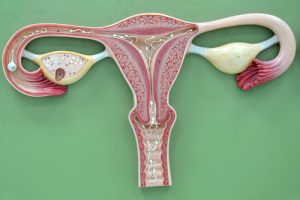Fertility is a top concern for many couples. Today, we’re going to talk about subfertility versus infertility and what they can mean for couples.
For couples, understanding your body is important when trying to conceive. One of the biggest concerns when it comes to having a child is fertility. Unfortunately, many couples have trouble conceiving, but it doesn’t have to be the end. The first step is educating yourself on your body and what could be causing difficulties.
Subfertility and infertility are two conditions that commonly affect couples. Today, we’re going to provide an overview of what these two medical terms mean for couples.
Understanding Subfertility
Subfertility doesn’t mean that you’re unable to get pregnant. But, it means there may be a delay in conceiving. Essentially, this means that it will take longer than average for couples to conceive a child.
Causes of Subfertility
The causes of subfertility is actually quite similar to those of infertility. Here are some possible causes of subfertility.

Another cause of subfertility is fallopian tube obstruction. This results in blocked fallopian tubes that prevent the egg from meeting the sperm.
If you have any abnormalities within your uterus, this can lead to difficulties conceiving. Some abnormalities include fibroids, double uterus and septate uterus.
Abnormal sperm function in men can lead to subfertility. This may be due to factors such as diabetes, gonorrhea, genetic defects and more.
This could be due to things like genetic conditions, premature ejaculation and injury to the testes.
Treatment
Increase your odds of conception by not drinking alcohol, avoiding smoking, cutting back on caffeine and maintaining a healthy weight. Also, here are some treatment options for men and women.
Understanding Infertility

- An egg is released from one of the ovaries.
- Sperm fertilizes the egg.
- The fertilized egg travels from the fallopian tubes to the uterus.
- The fertilized egg attaches to the inside of the uterus.
With that said, infertility is generally a result of something going wrong in one of the four steps above.
Causes of Infertility
There are various factors that contribute to infertility. Here are some potential causes to know.
This is a condition that causes women to either ovulate irregularly or not ovulate at all.
This is a natural occurrence for women around the age of 50. It is a natural decline in ovarian function. Women who are in menopause are classified as not having a period in one year.
This might be due to undescended testicles, genetic defects and certain health issues such as diabetes and HIV.
Problems with sperm delivery can be due to sexual problems such as premature ejaculation and genetic diseases like cystic fibrosis and blockages in the testes.
Treatment
Here are treatment options for men and women.
- Stimulating ovulation with fertility drugs
- Intrauterine insemination
- In vitro fertilization
- Sperm retrieval
- Changing lifestyle factors
- Surgery for some conditions such as a sperm blockage
Having difficulties with conception can be discouraging for couples, but it doesn’t have to be. With the right education and treatments, couples can increase their chances of conceiving whether the couple is dealing with subfertility or infertility.




